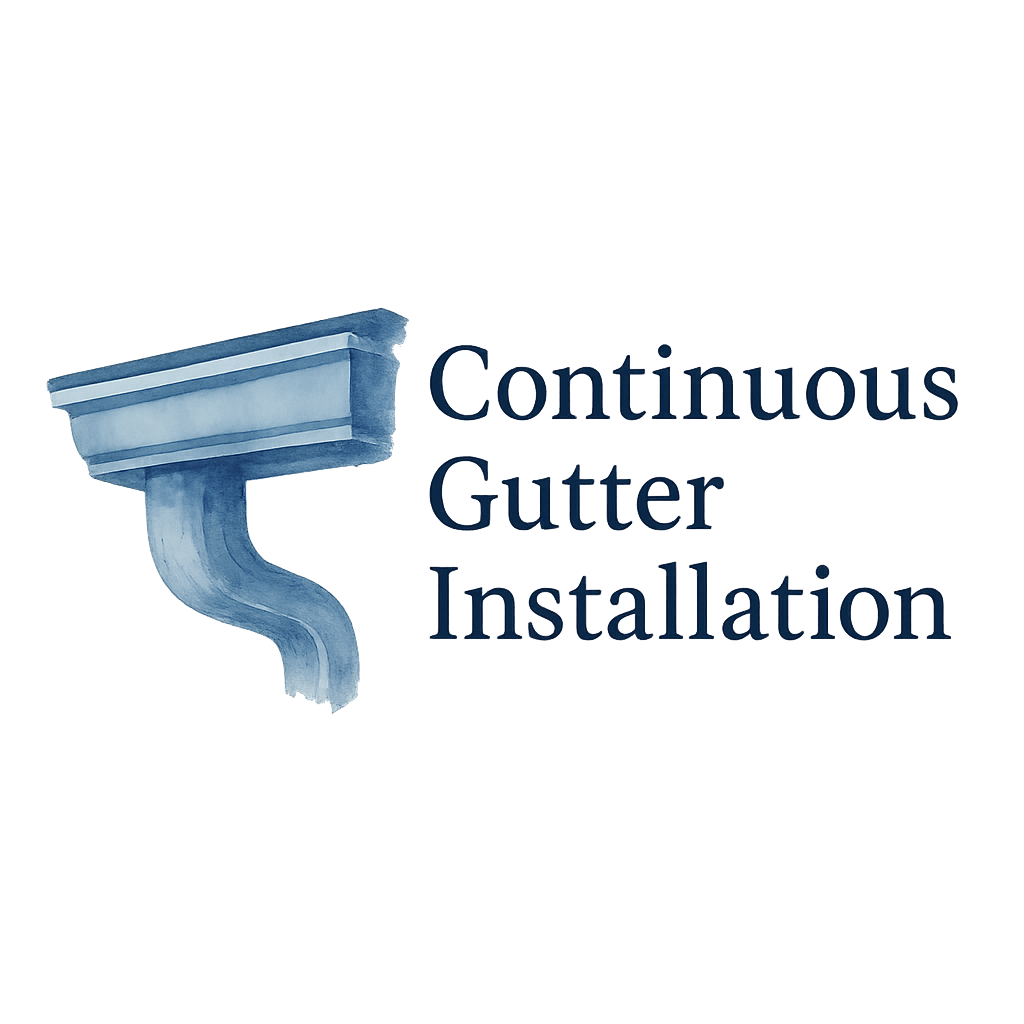Introduction: Why Preparation Matters for Gutter Installation
So, you’ve decided to upgrade your home with continuous gutters—great choice! But before the installers show up, there’s some homework to do. Prepping your home ensures a smoother installation, prevents unexpected delays, and saves you money in the long run. Think of it as laying the foundation before pouring the concrete; the better the prep, the stronger the results.
In this guide, we’ll break down the 8 essential ways to prepare your home for continuous gutter installation. Whether you’re doing it for better drainage, home protection, or curb appeal, these steps will set you up for success.
Understanding Continuous Gutters
What Are Continuous Gutters?
Unlike traditional sectional gutters that come in pieces, continuous gutters (also known as seamless gutters) are made from a single, custom-fit piece of material. This means fewer leaks, fewer maintenance headaches, and a sleeker look for your home’s exterior.
You can learn more about gutter basics in this installation guide.
Benefits of Continuous Gutters
- Reduced risk of leaks since there are fewer seams.
- Customized fit tailored to your home’s dimensions.
- Enhanced curb appeal with modern, streamlined designs.
- Long-lasting durability compared to sectional gutters.
For more insights, explore gutter types and styles to find the perfect match for your home.
Step 1: Inspect Your Home’s Exterior
Look for Existing Gutter Damage
Before installing new gutters, inspect your current system. Look for rust, cracks, sagging, or clogs. This helps identify problem areas that may need extra attention during installation. If you’re unsure, check out gutter damage warning signs.
Identify Roof and Siding Issues
Your new gutters will only be as effective as the surface they’re attached to. Check for loose shingles, damaged fascia boards, or rotting siding. Addressing these problems early prevents future water damage. For added safety, consider tips from gutter safety guidelines.
Step 2: Clear the Work Area
Remove Outdoor Furniture and Decorations
Installers need clear access to your roofline. Move patio furniture, planters, and decorations away from the house. This not only makes their job easier but also keeps your belongings safe.
Ensure Access to Driveways and Pathways
If installers are bringing equipment or ladders, blocked driveways and walkways can cause delays. Make sure there’s plenty of room for them to work efficiently.
Step 3: Trim Surrounding Trees and Vegetation
Why Trimming Is Important
Overhanging branches can get in the way during installation and may damage your new gutters later. Trim them back before the project begins.
Tools and Safety Tips
Use pruning shears, saws, or hire a professional arborist if necessary. Always wear gloves and eye protection. For future upkeep, read about seasonal care tips.

Step 4: Check Roof Condition Before Installation
Inspect for Leaks and Loose Shingles
Climbing onto your roof may not sound fun, but it’s worth it. Look for cracked or missing shingles, as water can seep under your gutters if left unchecked.
When to Call a Roofing Professional
If the issues seem beyond DIY fixes, contact a roofer. It’s better to spend a little now on repairs than face costly gutter and roof replacements later. Learn more about gutter replacement situations.
Step 5: Evaluate Your Drainage System
Downspout Placement Considerations
Downspouts are just as important as the gutters themselves. Poor placement can lead to foundation damage or basement flooding. Work with your installer to decide where water should be directed.
Connecting Gutters to Drains
If your property has underground drains, make sure they’re clear and ready to handle the water flow. Consider debris control solutions for extra efficiency.
Step 6: Discuss Gutter Styles and Materials
Choosing Gutter Types for Your Home
From aluminum to copper, there are plenty of materials to choose from. Each has its pros and cons depending on budget, climate, and style preferences. Explore modern gutter options.
Aligning Gutters with Exterior Design
Your gutters should complement your siding, roof, and overall home aesthetic. A trendy option may boost curb appeal—check out trendy gutter ideas.
Step 7: Budget and Cost Planning
Understanding Gutter Installation Costs
Costs vary depending on material, home size, and complexity. Use this budgeting guide to get a realistic estimate.
Planning for Long-Term Maintenance
Remember, the initial cost isn’t the only expense. Plan ahead for maintenance tips and potential repairs to keep your gutters in top shape.
Step 8: Work with Professional Installers
Why Hiring Experts Matters
DIY may save money upfront, but improper installation can lead to leaks, sagging, and costly repairs. Professional installers have the right tools and experience.
Questions to Ask Before Installation
- How long will the project take?
- Do you provide warranties?
- What gutter protection systems do you recommend?
Speaking of which, check out gutter protection systems for long-term solutions.
Maintenance Tips After Installation
Cleaning and Seasonal Care
Even the best gutters need regular cleaning. Leaves, twigs, and debris can clog your system. Discover practical gutter cleaning methods.
Gutter Protection Systems
Invest in gutter screens or guards to reduce cleaning frequency and extend the lifespan of your gutters.
Common Mistakes to Avoid During Preparation
- Ignoring roof damage before installation.
- Skipping cost planning.
- Failing to clear the work area.
- Forgetting to trim trees near the roofline.
Avoiding these mistakes ensures your installation runs smoothly and your gutters last longer.
Conclusion
Preparing your home for continuous gutter installation isn’t complicated—it’s all about being proactive. From inspecting your roof to budgeting wisely and working with professionals, each step sets you up for success. Think of gutters as your home’s first line of defense against water damage. When properly installed and maintained, they protect your foundation, roof, and even landscaping.
If you’re ready to take the next step, explore expert resources on Continuous Gutter Installation to guide your journey.
FAQs
1. How long does continuous gutter installation usually take?
Most projects are completed within a day, depending on your home’s size and condition.
2. Do continuous gutters require less maintenance than sectional gutters?
Yes, because they have fewer seams, they’re less prone to leaks and clogs.
3. Can continuous gutters be installed on any type of roof?
They work with most roof types, but a professional evaluation ensures compatibility.
4. Should I replace my roof before installing new gutters?
If your roof shows significant damage, replacing it first is a smart move.
5. How much should I budget for continuous gutter installation?
Costs vary, but using this budgeting resource will help you plan effectively.
6. Do I need gutter guards with continuous gutters?
While not mandatory, gutter protection systems can reduce cleaning and extend lifespan.
7. How do I know if my gutters need replacement?
Look for sagging, cracks, peeling paint, or water pooling near your foundation—these are clear warning signs.


